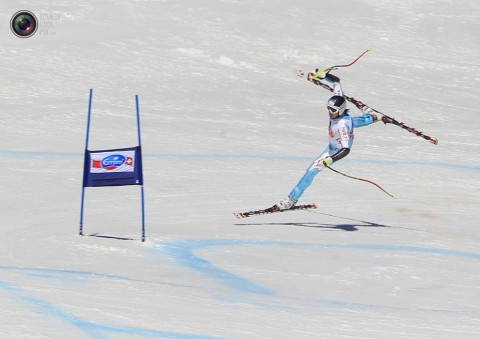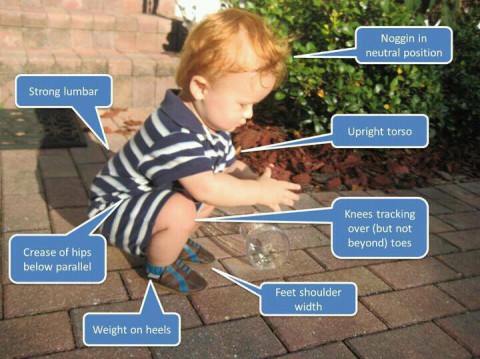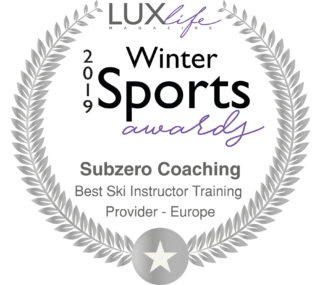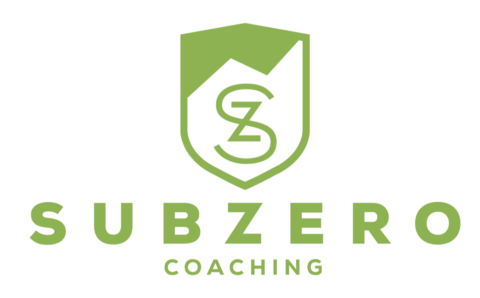Autumn Ski Fitness – Range of Motion – part 1

Autumn Ski Fitness Range of Motion
The vast majority of the population believes they were born “like that” and others are “gifted”.
The vast majority hasn’t just been able to actually keep what they were able to do as toddlers.. Let’s have a look at what the rage of motion is and the implications of this childhood “loss”.
Range of motion (ROM) is the measurement of movement around a specific joint or body part.
In order to increase your range, the tendons, ligaments, muscles, bones and joints need to be trained specifically towards this goal.
This is something that tends to be left out in training programs, sometimes because the coaches or the performers don’t recognise the importance of the skill, or sometimes just because people believe that you can only increase your range of movement through classic stretching (holding positions).
So here is the first distinction.
Static positions (classic stretching) are useful to improve the flexibility of the muscle.
Dynamic movements improve the range of motion of the joints, and this works more on the tendons than the static exercises do.
Ski Fitness – Range of Motion’s Applications
A full range of motion is important to enable the performer to achieve their full potential in a competitive situation. A muscle that is tensed and short, for example, will only be strong in a narrow movement range. The output will be a limited movement, poor in strength outside of a specific angle, often limiting technique and also dangerous because it will expose the performer to injuries.
Common cases of limiting ROM can be locked gluteus or adductors in runners, or pectoralis major and minor in throwing sports.
When looking into a training schedule it is essential to understand which ranges of motion are required by the sport, then work to improve to match the specfic needs.

High performance skiing is composed of a sequence of movements that require a good amount of ROM. The pelvis is definitely the key point of the skier’s body, with the hip sockets and the spine working constantly during the turns.
The lower joints will also work within angles and pressures far from classic everyday’s life.
Keeping these movements solid and safe is essential.
To do so the body needs to be trained:
1. in the full range of motion of each joint
2. with a safe load
3. to be challenged with proprioception exercises
4. to be challenged with repetitive long range motion exercises
Training movements is the key for a gain in range of motion.
By creating and repeating movements that use the full range of the joint, we will ask the muscle and tendons to stretch every time, and repetition is the only way our body learns a new skill.
It needs to be scheduled within the training program for few times a week, if not a few times a day, depending on goal and the time available.
In the next stage the strength sessions should be tweaked to incorporate the gains in range of movement, in order to stabilise the joints within the newly acquired levels of motion.
An exercise that can be learned and incorporated to a training program could be the Full Squat.
ROM and Squat
 While it’s true that squats with over load could be unsafe if gone over 90° it is interesting from a ROM perspective to train the (theoretically) inherent ability of squatting until the hips reach the heels.
While it’s true that squats with over load could be unsafe if gone over 90° it is interesting from a ROM perspective to train the (theoretically) inherent ability of squatting until the hips reach the heels.
It’s a primordial position used by all our ancestors to work or even rest and it creates the opportunity to train the ROM of ankles, knees, hips as well as stretching the spine, specially on the lumbar region.
Here are some technique tips:
just like normal squats the knees shouldn’t go over the tip of the feet.
The distance between feet should be shoulders wide.
The feet should be slightly extra rotated (open).
While flexing the legs the pelvis should lower without extra rotating, brining the “tail” under and beneath us.
With the hands in front we can reach for a help against a wall or a pole, in order to stabilize the legs in the descent. Or helping holding the mid position (the one hold by the toddler in the picture) or on the ascent.
Movements should be slow and in control.
The use of weights is clearly forbidden at this stage.
By repeating and holding the full squat stance we can slowly train the joint to work in a “new” range, recruiting all those muscle groups that stabilize the body, from the sole of our feet to the head.
It will be possible to feel which muscles are in competition with each other and understand how the training will need to be scheduled, in order to balance the strength (for example) between the muscles at the front and at the back of the lower legs, or the pelvic region or even the upper body.
In the next chapter we’ll have a look at what to take in consideration while training and picking exercises for the increase of our ROM.
The Subzero Coaching Team
Note to the reader.
The article “Ski Fitness Range of Motion” is part of a wide programme of seminars organized for members of Subzero Coaching. It is not intented as exaustive resume of the subject.
The information provided on this site should not be used for diagnosing or treating a health problem or disease. It is not a substitute for professional care.
Subzero Coaching is a sport coaching company specialised in Ski Instructors Education. We are based in Zermatt, Switzerland. Where we run winter courses for professionals towards the Level 3 ISIA Stamp as well as the Level 4 Full Certification. Seminars on this and many more topics are delivered in all our ski instructor courses.
Our Coaching Team comes from different backgrounds and associations. Enabling us to provide excellent training to instructors belonging to different education systems.
One to one coaching, Race training camps and much more are also available for professionals looking to develop further in their pathway.
